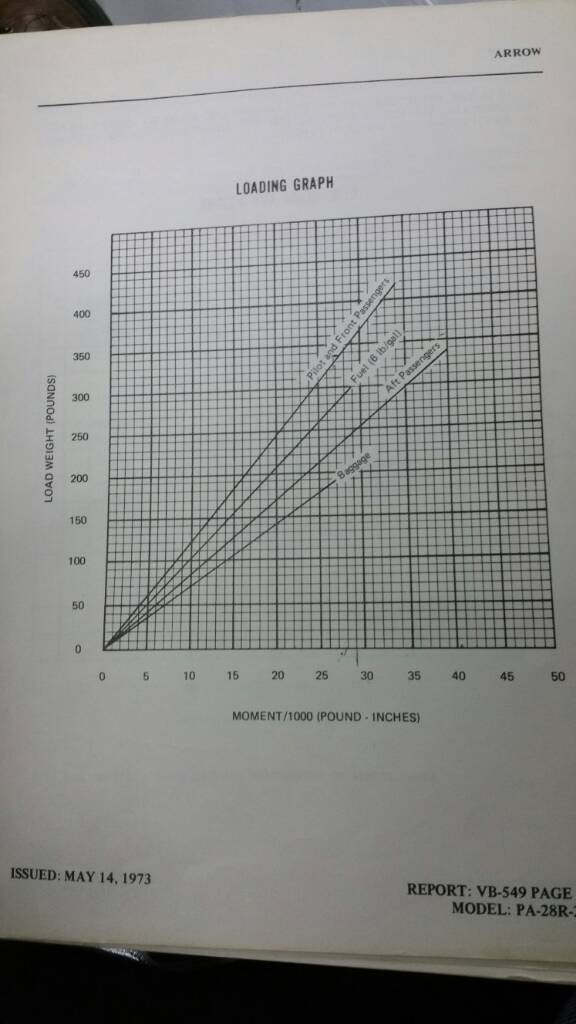farmerbrake
Line Up and Wait
- Joined
- Aug 21, 2014
- Messages
- 578
- Display Name
Display name:
farmerbrake

Attached is a picture of the loading graph to figure out the moment of our arrow.
My question is: where the diagonal lines stop, is that the maximum amount of weight allowed in that particular area? Or can you extended those lines provided
a) it's not specifically prohibited (like in the baggage area)
b) the cg & gross weight are all within specs
Thanks in advance!

